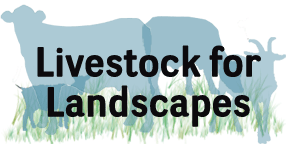


Educated Cows Eat Weeds! |
Ah Ha! Moments |
Herbicides may be doing more damage than good to our forage base. Competition improves training. In Boulder County, Colorado in 2007, my training tubs were recycled 250 lb. supplement containers, one for every 2.5 animals. After watching the animals I realized that the scarcity and height of the tubs increased my success. Animals fought over what was available, and the height helped because animals were unable to see if a herdmate was eating a weed or something else from the tub. The combination seemed to cause animals to be less choosey about what they ate. I've since used this technique to increase cows' willingness to try new foods. Breed is not important in determining which animals would eat weeds. Longhorns, shorthorns, herefords, and angus-cross all ate weeds. Some animals ate more weeds than others, but this was not breed specific. Our best weed eaters also had offspring who were good weed eaters. When grazing leafy spurge, trainees stripped stems of leaves and flowers rather than eating the entire plant. Trained animals add new weeds and brush to their diets It's easier to train in pasture because you don't have to feed and water animals yourself. Pasture size and lushness doesn't impact trainees' willingess to walk long distances at feeding time. Some of my trainees have walked as much as a mile to come to the tubs when I honked for them. Trainees become more open-minded about what "food" is. They added bull thistle, poison oak and coyote bush to their diets. Trainees ate coyote bush every bit as well as my goat herd ever did on brush. It doesn't take long for herd mates to learn from trained animals. In Marin County 12 trained animals taught 120 more. In Montana, eight trained heifers trained 20 cow-calf pairs in a large pasture. One rancher found that his steers learned from 40 trained heifers grazing in a separate pasture next to them. I don't know yet how long learning takes, but I know that it is less than 30 days. Feeding on the ground is possible if.... The animals see the feeds better if you drive a flattened area into the grass. It also helps to choose feeds that contrast in color with the grass.,Don't begin training for weeds until the herd is coming well to the unfamiliar foods. These trainees moved easily from Canada thistle on to musk thistle. They ate it as soom as they arrived in their first trial pasture. |